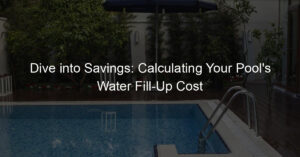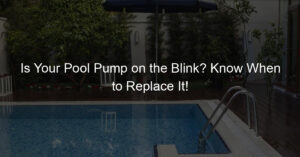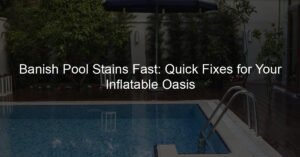Keeping a pool clean is essential for maintaining its quality, appearance, and safety for swimmers. One of the most effective ways to do this is by vacuuming your pool regularly. This method helps to remove debris and prevent the build-up of algae, ensuring that your pool remains a pleasant and inviting environment.
Understanding how to vacuum a pool properly can save time and effort, and ensures the longevity of the pool and its equipment. There are various types of pool vacuums available in the market, each with its own unique features and benefits. Knowing how to maintain your pool cleaning equipment and balance the water chemistry in your pool is also crucial for achieving optimal results.
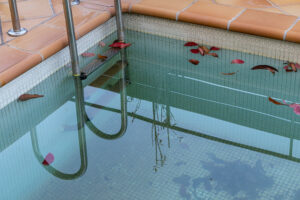
Key Takeaways
- Regularly vacuuming your pool helps maintain its cleanliness and prevents algae build-up
- Selecting the right type of pool vacuum is crucial for efficient pool maintenance
- Proper care of equipment and maintaining water balance contribute to a healthy pool environment
The Pool Vacuum Components
When I vacuum my pool, I make sure to get familiar with all the necessary components. First up, it’s important to know about the vacuum head, which is the part that rolls along the pool floor and collects debris. I attach this to a telescopic pole to reach every corner of the pool.
Next, I need the vacuum hose, a flexible tube that connects to the vacuum head and extends to the pool’s filtration system. This hose is responsible for transferring the collected debris from the vacuum head to the pool filter. I always ensure it’s long enough to cover my pool’s depth and width.
Now, let’s talk about the pool pump and filter. The pump creates suction, drawing water and debris from the pool floor through the vacuum hose. At the same time, the filter captures debris, preventing it from re-entering the pool. There’s a variety of filtration systems available, including sand filters and cartridge filters. For optimal pool maintenance, I always refer to the manufacturer’s specific guidelines on filter care.

Another important component is the vacuum plate, which connects the vacuum hose to the skimmer. The skimmer basket catches larger debris before it reaches the pump strainer basket. I never forget to clean the skimmer and pump strainer baskets after vacuuming to maintain peak performance.
When using a manual pool vacuum, like the one I often use, I connect it to my garden hose to generate a water flow that lifts debris from the pool floor. This type of vacuum also has a vacuum bag to catch debris. On the other hand, an automatic pool vacuum operates independently, using pool’s circulation system or a built-in motor to move around the pool.
Lastly, the multiport valve and backwash hose come into play when I need to clean my pool filter. These components are crucial for proper filter maintenance, especially when using a sand filter. By turning the multiport valve to the “backwash” setting and connecting the backwash hose, I can efficiently clean the filter and prevent clogging.
By understanding these pool vacuum components, I can confidently and effectively maintain my pool, keeping it clean, clear, and well-maintained for an enjoyable swimming experience.
Types of Pool Vacuums
When it comes to vacuuming my pool, I know there are several types of pool vacuums available, each with distinct features that cater to different needs and pool types. To help me understand the various options, I’ve broken down the main types into three categories: suction, pressure, and robotic pool cleaners.
First, suction pool vacuums are a popular choice due to their simplicity and affordability. These vacuums attach to my pool’s existing filtration system via a pool vacuum hose. As my pool pump runs, it generates suction, drawing water and debris through the vacuum head and into the pool filter. Suction pool vacuums are suitable for both above-ground and inground pools and can effectively tackle light to moderate debris loads.
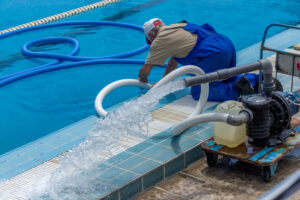
Next, pressure pool vacuums are known for their power and ability to handle larger debris. This type of vacuum connects to my pool’s return jet, using the pressure from the water flow to propel itself around the pool. Debris is collected in a bag attached to the vacuum, rather than entering my pool’s filter system. Pressure pool vacuums are ideal for inground pools with heavy debris but may not be as efficient in cleaning the walls of above-ground pools.
Finally, robotic pool cleaners offer cutting-edge technology and ease of use. These self-contained units use an electric motor to drive them around the pool, efficiently cleaning the floor, walls, and waterline. Robotic pool cleaners come with built-in filters, so they don’t need to connect to my pool’s filtration system. They are ideal for both above-ground and inground pools and are excellent at handling all types of debris. While they tend to be more expensive than suction or pressure pool vacuums, their advanced features and thorough cleaning capabilities are often worth the investment.
It’s essential to choose the right type of pool vacuum for my pool’s specific needs, ensuring an effective and thorough vacuuming process. With the information I’ve shared, I hope I’ve provided a clear understanding of the main types of pool vacuums: suction, pressure, and robotic pool cleaners.
Optimum Procedure for Pool Vacuuming
To maintain a pristine swimming pool, regular vacuuming is essential. I’ve outlined a simple, efficient method for both in-ground and above ground pools. The procedure I follow ensures thorough cleaning while preventing algae growth and maintaining water clarity.
First, I gather all the necessary equipment, including a pool vacuum, a vacuum bag, a vacuum plate, and a garden hose. It’s essential to ensure the vacuum equipment is in good working order before getting started. I usually find the necessary tools at my local Home Depot.
At the beginning of the process, I make sure the pool water level is appropriate for vacuuming. I typically aim for the halfway point of the skimmer opening, adjusting the water level as needed with a garden hose.
Next, I prepare the swimming pool for vacuuming by scrubbing the pool floor and walls. This action helps loosen any stubborn dirt and algae, making the vacuuming process more effective.
Before connecting the vacuum equipment, I always backwash the pool filter to maximize suction power. Then, I attach the vacuum plate to the skimmer plate, ensuring a secure connection. This plate will help maintain proper water flow and prevent clogging during vacuuming.
To efficiently vacuum the pool, I start at the shallow end and work my way toward the deep end. I methodically move the vacuum in a grid pattern, covering the entire pool floor. When vacuuming an above-ground pool, I pay close attention to the pool edges and seams, where dirt tends to accumulate.
During the vacuuming process, I keep an eye on the pressure gauge to make sure the suction remains optimal. If the pressure drops, I briefly pause to backwash the filter and restore the suction power.
Once I’ve covered the entire pool floor, I remove the vacuum equipment and clean the vacuum bag. Lastly, I rinse the hose and store the tools in a secure, dry location. By following these steps, I successfully maintain a clean swimming pool environment for everyone to enjoy.
Proper Care of Pool Cleaning Equipment

To keep my pool looking its best, I make it a point to regularly care for and maintain my pool cleaning equipment. Not only does this help extend the life of my tools, but it also ensures they work efficiently and effectively.
When it comes to maintaining my vacuum hose, I make sure to inspect it for any holes or leaks after each use. This helps prevent a loss of suction power and maintains the vacuum’s effectiveness. After using my vacuum, I also remove any debris from the skimmer basket, as a clean basket is essential for proper water circulation and filtration.
I pay regular attention to my pool’s floor and suction vent. By keeping the pool floor clear of debris, I ensure that my vacuum doesn’t get clogged or damaged. As for the suction vent, I periodically check it for any blockages and clear them to maintain optimal suction performance.
One of the most versatile pieces of equipment I use is the telescopic pole, which I pair with various attachments like nets, skimmers, and brushes. To keep my telescopic pole in good condition, I clean and inspect the locking mechanism to prevent it from jamming or failing. I also make sure my nets and skimmers are free of damage and my brushes have sturdy bristles to effectively clean my pool’s surfaces.
I always remember to switch my filter valve setting before vacuuming, as this helps protect the filter system while cleaning the pool. There are various types of pool vacuums I know of, and they come in suction-side, pressure-side, and robotic models. Each type may require slightly different maintenance, so I follow the manufacturer’s recommendations carefully.
When cleaning, a telescoping extension pole is handy for reaching further into the pool. Combined with a pool brush, I can effectively scrub away dirt and algae buildup. As for my pool’s filtration system, I ensure to clean the cartridge filter or backwash the DE filter as needed, according to the manufacturer’s guidelines.
Investing in good-quality pool cleaning tools is a must, and I make it a point to store my equipment properly when not in use. By doing so, I protect my investment and can enjoy a cleaner, healthier pool for years to come.
Maintaining Pool Water Chemistry Balance
Before diving into vacuuming a pool, it is crucial to maintain a balanced pool water chemistry. I always start by checking the pH levels to ensure the water is neither too acidic nor too alkaline. Ideal pH levels should be between 7.4 and 7.6. Maintaining these levels prevents the water from becoming cloudy and contributes to the effectiveness of the chemicals.
To maintain a proper pool water balance, I regularly add chemicals such as chlorine or bromine to eliminate contaminants and keep the water clear. It’s essential to follow manufacturer instructions when applying these chemicals to avoid overdosing.
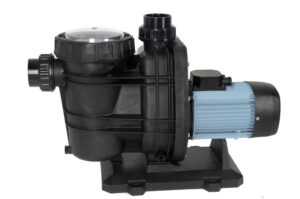
When I encounter floating debris or gunk, I use a skimmer net to remove them from the pool surface. This step is essential, as debris can affect the efficiency of the filtration system. Keeping the water level in check is also crucial, as too much or too little water can affect the suction and hamper the vacuuming process.
When it’s time to vacuum a pool, I choose a vacuum type suitable for my needs. Manual vacuums offer the most control, as I can maneuver them in any direction to focus on specific areas. Suction-side vacuums attach directly to the filtration system and utilize the pool’s existing suction. Pressure-side vacuums use water pressure to capture debris, directing it to a separate collection bag or into the pool’s filtration system.
As I vacuum, I monitor the filter valve setting to ensure it doesn’t change unintentionally. The correct valve setting maximizes the filtration system’s efficiency and contributes to a successful pool cleaning experience. By manually vacuuming and maintaining proper water chemistry, I can effectively remove contaminants and keep my pool sparkling clean.
Frequently Asked Questions
What is the proper way to attach a pool vacuum head?
To attach a pool vacuum head, I start by connecting it to the telescopic pole. Then, I securely fasten one end of the vacuum hose to the vacuum head and the other end to the skimmer or dedicated suction port. Before placing the vacuum head into the water, I ensure all connections are tight and air-free, minimizing the risk of reduced suction.
How do you vacuum an above-ground pool effectively?
To vacuum an above-ground pool effectively, I first ensure the pool equipment is in working order and the filter is clean. I attach the vacuum head and hose as described above, then slowly lower the vacuum head into the water, allowing the air to escape from the hose. Once the vacuum head and hose are fully submerged, I begin the vacuum process by moving it slowly along the pool floor, overlapping each stroke to avoid missing any debris.
What are the steps to vacuum a pool to waste?
When vacuuming a pool to waste, I follow these steps:
- Turn off the pool pump and switch the multiport valve setting to “Waste.”
- Attach the vacuum head, hose, and pole as previously mentioned.
- Begin vacuuming, making sure to move slowly and carefully, removing debris without stirring up the water.
- Regularly check the water level, as vacuuming to waste will lower the pool’s water volume.
- Once finished, refill the pool to the proper level and return the multiport valve to its regular setting.
How do you connect a pool vacuum to a sand filter?
To connect a pool vacuum to a sand filter, I first attach the hose to the vacuum head and telescopic pole. Then, I connect the other end of the hose to the skimmer or dedicated suction port. I make sure the multiport valve is set to “Filter” before turning the pool pump on to begin vacuuming. Maintaining proper flow through the sand filter will help avoid any potential damage.
What is the process of hooking up a pool vacuum to an Intex pump?
When hooking up a pool vacuum to an Intex pump, I:
- Turn off the Intex pump and remove the suction strainer.
- Attach the vacuum head to the telescopic pole and connect the hose to the vacuum head.
- Lower the vacuum head into the water, releasing any air trapped in the hose.
- Connect the hose adapter to the pump by attaching it to the inlet on the side of the filter housing.
- Turn on the pump and start vacuuming the pool.
Which filter setting should be used while vacuuming a pool?
When vacuuming a pool, I typically set the filter to “Filter” mode to ensure proper filtration and circulation of the water. If I need to vacuum a pool with heavy debris, I might choose to switch the multiport valve to “Waste” mode to bypass the filter, preventing clogs and minimizing the additional load on the filter system. Once vacuuming is complete, I return the valve to its normal filtration setting.





